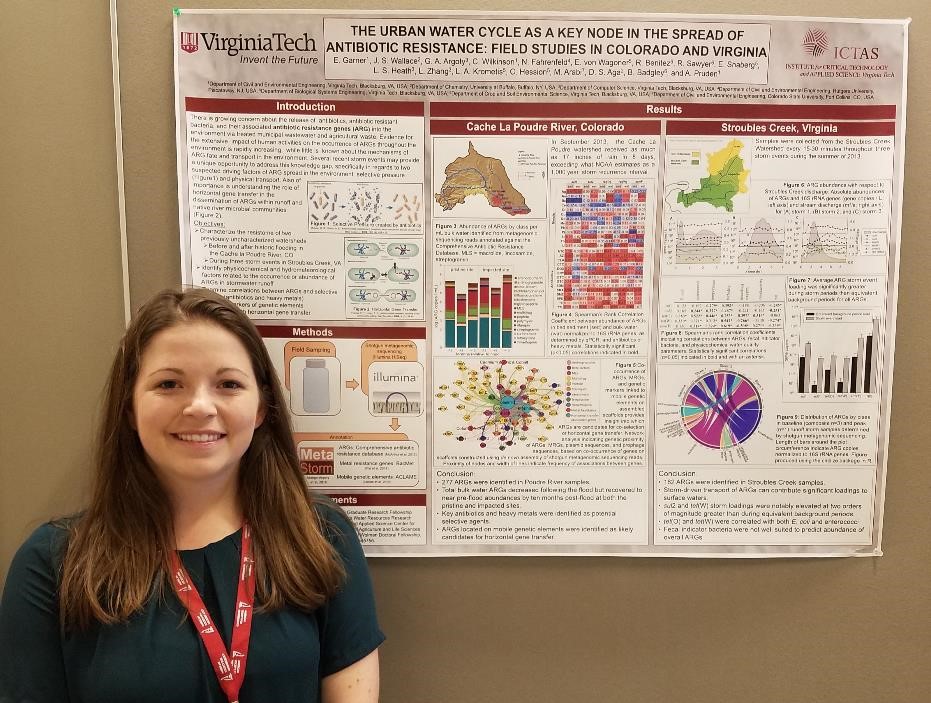The urban water cycle as a key node in the spread of antibiotic resistance: field studies in Colorado and Virginia

By Emily Garner, PhD student of Civil and Environmental Engineering and Water INTERface IGEP, presented at the American Society of Microbiology Conference on Innovative Microbial Ecology for Mitigation of Antibiotic Resistance and Bacterial Diseases
Increasing antibiotic resistance among bacteria is a growing public health concern. While antibiotic resistance research has been primarily focused on clinical spread and occurrence, the urban water cycle has been identified as a key node in the spread of antibiotic resistance genes (ARGs). Points sources, such as wastewater treatment plants, and non-point sources, such as agricultural runoff, have been identified as sources of surface water contamination by ARGs. Transport of ARGs, horizontal gene transfer, and selection by antimicrobial compounds may occur following discharge of ARGs to surface water and have to potential to impact downstream communities.
Two unique watersheds were studied in order to gain insight into key mechanisms of ARG fate and transport: the Cache la Poudre River watershed (Fort Collins, CO) and the Stroubles Creek watershed (Blacksburg, VA). In 2013, a catastrophic 500-year storm flooded the Poudre River, transforming the river landscape. To assess the impact on riverine ARGs, water and sediment samples were collected at river sites of varying impact from urban and agricultural point and non-point sources, both before and for 18 months after the flood. ARG concentrations were monitored in Stroubles Creek during storms with smaller recurrence intervals, where samples were collected at 15 minute intervals throughout three different storm events. Five key ARGs (sul1, sul2, tet(W), tet(O), erm(F)) as well as total 16S rRNA genes were monitored via quantitative polymerase chain reaction. Shotgun metagenomic sequencing and subsequent annotation against the Comprehensive Antibiotic Resistance Database was used to identify known ARGs in select samples from the two watersheds.
Across the two datasets, 268 ARGs conferring resistance to 17 classes of antibiotics were detected. In the Poudre River, total bulk water ARGs decreased following the flood but recovered to near pre-flood abundances by ten months post-flood at both a pristine site and a site historically heavily influenced by wastewater and animal feeding operations. Network analysis of de novo assembled sequencing reads identified ARGs likely located on mobile genetic elements, with up to 11 ARGs per plasmid-associated scaffold. In Stroubles Creek, all ARGs, with the exception of tet(O), were significantly elevated above background concentrations during at least one of the monitored storms. Furthermore, the average total load of each ARG was at least one order of magnitude greater during storm events than would be expected during the equivalent period on days not impacted by precipitation.
Understanding the impact of anthropogenic and agricultural contamination of surface water as well as the fate and transport mechanisms facilitating spread of ARGs in surface water can inform development of best management strategies to protect downstream communities.


